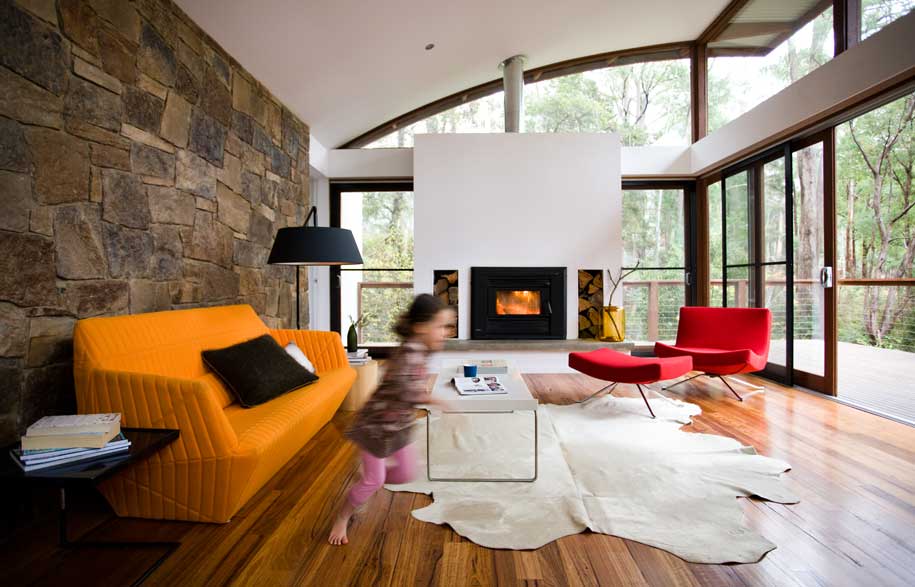Stringybark Creek, where the Kelly gang infamously shot dead three policemen trying to flush them out from hiding, is just north of the town of Mansfield. With a population of just 7,500 and set amongst forests of Alpine Ash, Snow Gum woodlands and open plains, Mansfield retains its rustic beauty and atmosphere of times gone by.
Here, horsemen made immortal in Banjo Patterson’s epic poem ‘The Man From Snowy River’, drove their cattle up to the plains in summer. Dotted throughout the landscape are the remains of their huts. It is these iconic huts that inspired architect, Darren Sinclair-Cole, when designing and building a lodge for his own family, in the same mountains.
“As simple shelters from the harsh alpine elements, cattlemen’s huts are a unique Australian structure, vernacular in form and using local timbers, stone and corrugated iron,” Darren explains. “These principles have been adopted to provide an elegant, but simple structure in this building.”
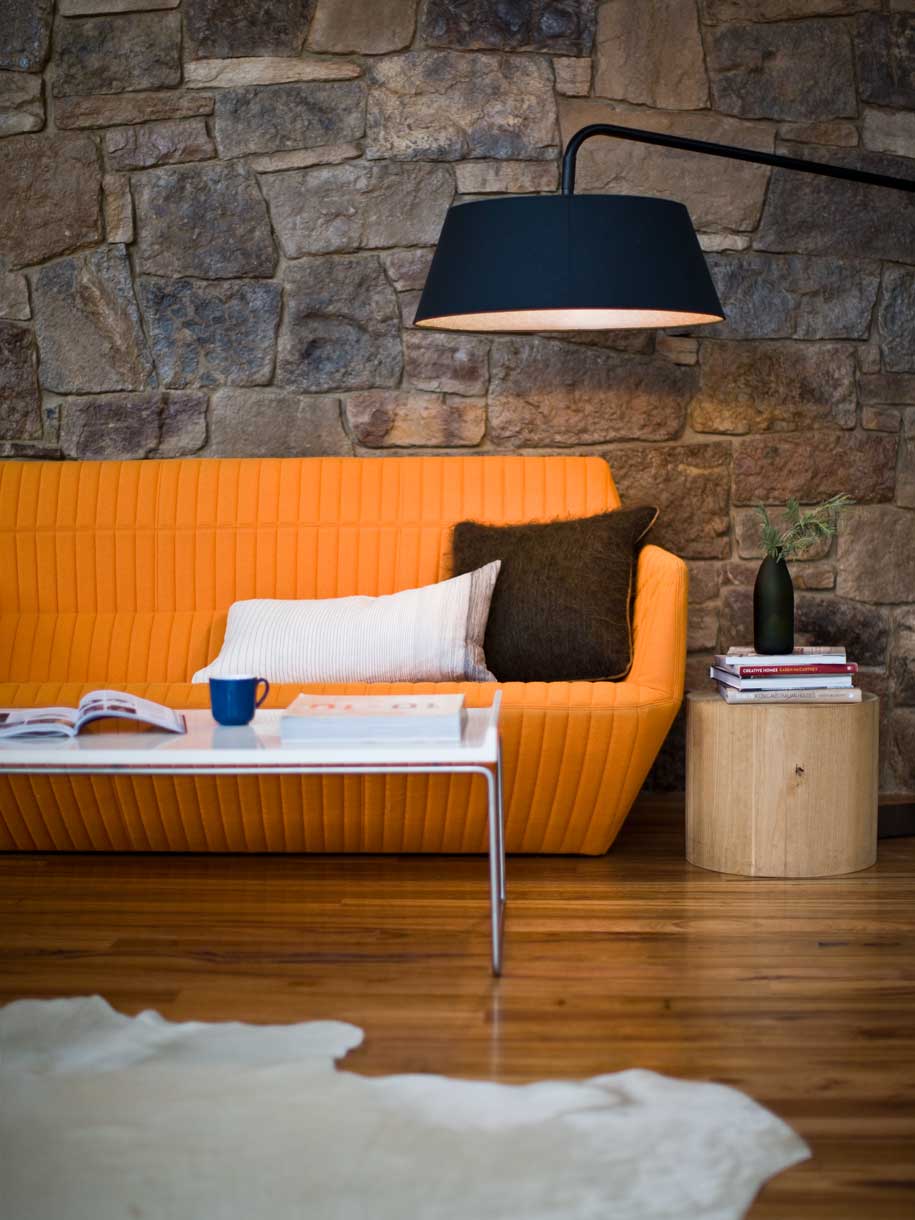
But it is not just the beauty of the landscape and connection with Australian history that draws Darren and his young family to these parts. “My family have been holidaying in this area for over 25 years,” he recalls. “It seemed natural that I would also build something and undertake a development close to the ski fields to complement my passion for skiing.”
Mansfield and its surrounding land and lakes offers a range of activities throughout winter and summer that promote the typical healthy outdoor Australian character. Nearby Mount Buller and its peak at 1805 metres above sea level attracts thousands of keen skiers annually from June to August, while in the summer months tourists and locals alike can be found mountain-biking, rock climbing, fishing and bushwalking, not to mention the range of trail rides that follow the paths of the long gone cattlemen.
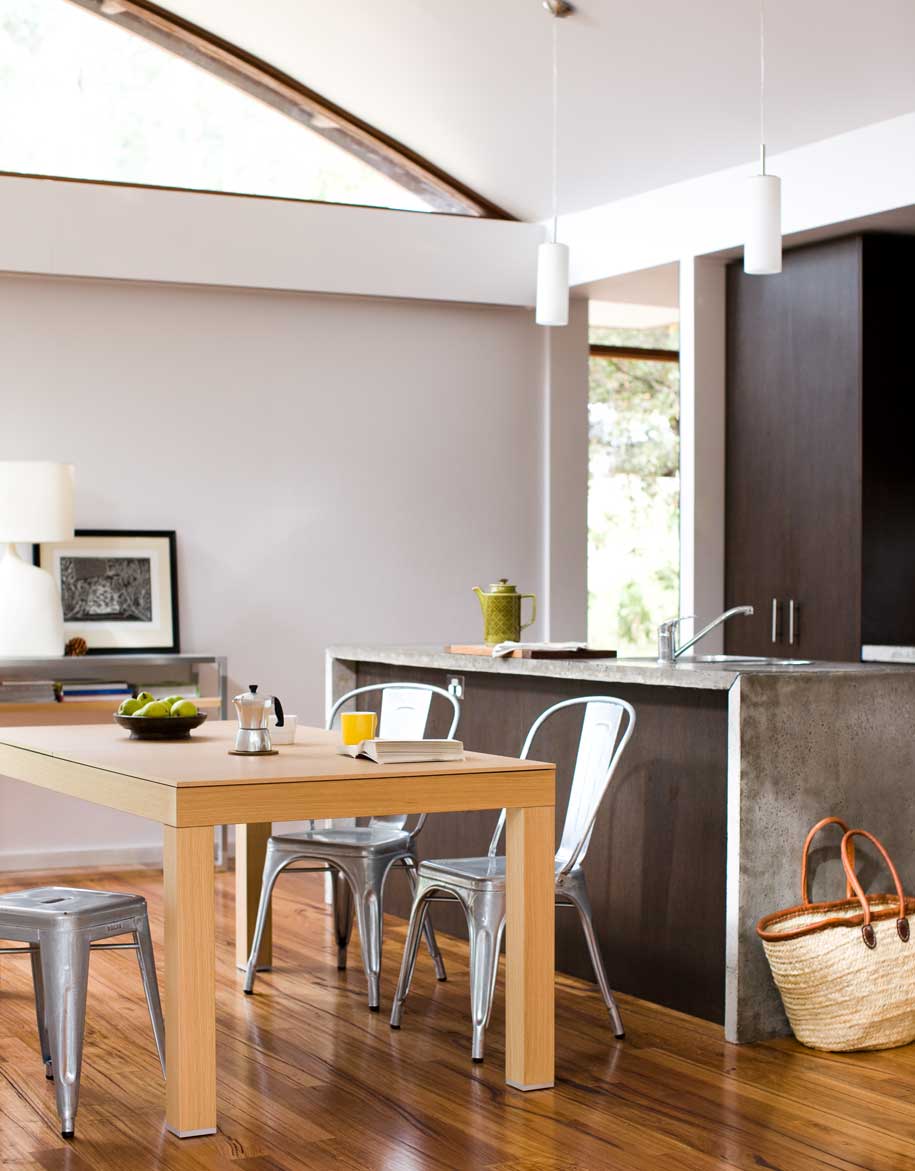
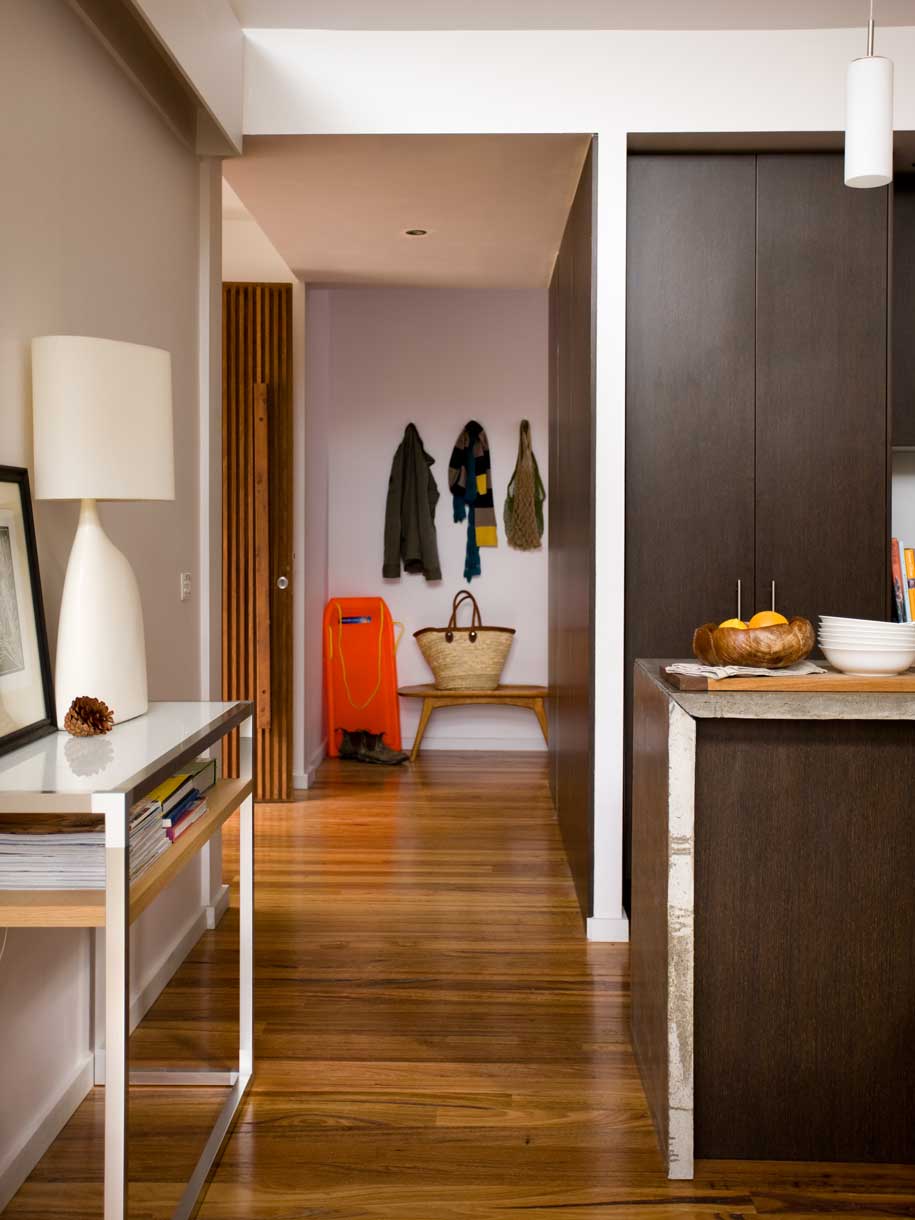
Just two hours drive from Melbourne, Mansfield represents an escape from the hectic rush of the week for Darren, wife Vanessa, daughter Ella, son Miles and Buzzy the dog. “We try to get up there at least once a month over summer, but over the winter period we are up there often every weekend while the snow is around. But when the littlies are tired and the adults have had enough,” Darren adds, the family lodge also “makes a great retreat after a hard and busy day on the slopes, to relax in front of the fire and have a few quiet ales.”
Darren’s experience as one of the directors and principal of architecture, visualisation and software programming company, Orbit Solutions, stood him in good stead throughout the design and construction process, as the site initially posed a few ‘challenges’. Nestled into the Mountain Ash forest, the structure sits on a steeply sloping site which called for a lightweight post-and-beam construction.

Darren has witnessed firsthand the hazards of the deceptively serene landscape, which despite becoming snow-covered in winter, is in summer one of the most fire-prone areas in Australia. During the building of the lodge “we were hit by the worst fires in Victoria since Ash Wednesday [when, in 1983, over 100 devastating fires burned across Victoria and South Australia] and were faced with a fire front about 600 metres away from the building,” he remembers. Luckily, the structure remained safe, but Darren paid heed to the destructive possibilities of the surrounding environment, determined to minimise the risk for his family.
The design employs both passive and active fire prevention methods, adopting the highest levels set out by the country’s peak standardising authority, Standards Australia. “The dwelling uses steel stirrups to lift the timber posts off the ground, and uses large open areas under the floor for debris flooring, compressed strawboard for internal lining, and masonry for the internal support structure,” Darren explains. “There is also an active fire sprinkler and pump system attached to a large tank, sitting under the dwelling.”

As well as these fire-prevention strategies, Darren took on the pioneering spirit of those first settlers in the area, his lodge being the first project to use CSR’s Hebel domestic floor panel in an alpine application. As with the strawboard, he was keen to adopt the Hebel in the project because of its numerous qualities, not the least of which were environmental “Both these products are traditionally used in commercial applications, but they have worked brilliantly here, acting as both sound and thermal barriers to the outside extremities.”
The lay-out, like the construction method and material selection, is derived from function. A central masonry core houses all the wet areas and a centrally located drying room radiates heat through the building in the cold winter months. The perimeter of this central core also separates the sleeping and entertaining areas, so that “even when there are a lot of people staying you can retreat to the bedrooms or loft area, while still maintaining a ski lodge feel in the main living lounge area around the fire”.
With the consolidation of services, the cost of plumbing was kept to a minimum, with short pipe runs from the hot water system to the taps. Run-off from the two butterfly rooves which cover the external box elements is collected by a very large central box, then deposited into the tanks positioned below the clear spanning floors to the rear of the building.
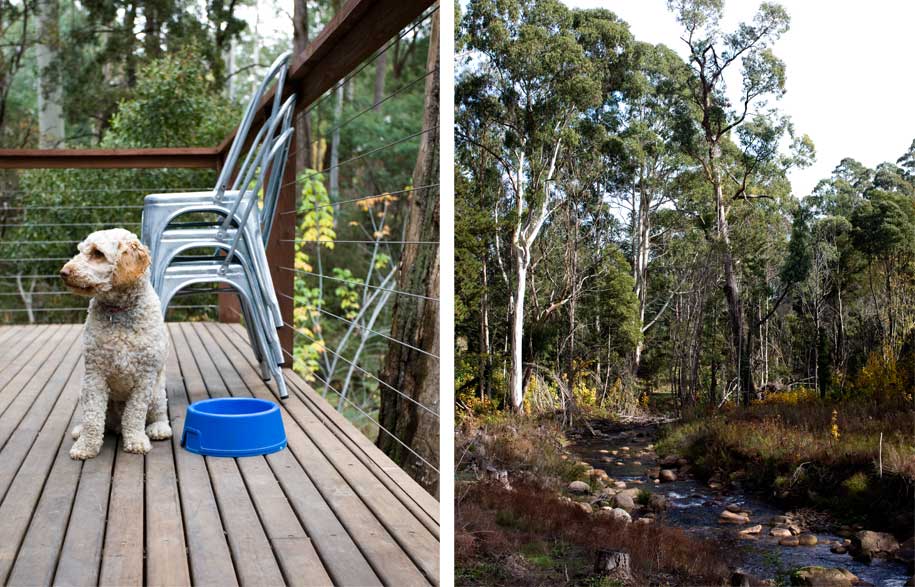
Because of these energy and cost-saving features, Darren could use a high quality of material and standard of product while not blowing out the cost too drastically. He also maintained an environmental emphasis to the finishes. “All timbers used are plantation timbers and strawboard lining in lieu of plaster has been adopted,” he says. “Double- glazing and the highest insulation has been used throughout the house, all water outlets are of the highest ratings and we have two tanks,” he says, “one for fire and the other for secondary water use.”
Despite the depth of thought behind the design, this is a simple dwelling, similar to the original cattlemen’s huts. Darren has designed the lodge as a space for his family to relax, enjoy the environment and each other’s company, even when doing everyday activities. “The living area lay-out enables interaction from the whole family when entertaining and cooking, which is generally a big event; we enjoy preparing fresh food from the local area whenever possible.”
“Last year,” he reminisces, “we had a family Christmas day at the lodge which was an amazing day in a beautiful bush setting, on our large balcony to the side and rear of the lodge.” It’s these memories that, like the legends borne of the landscape, will resonate with generations of his family to come.

Photography by James Geer

